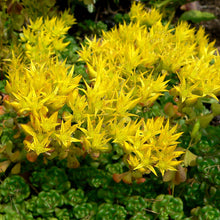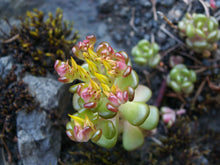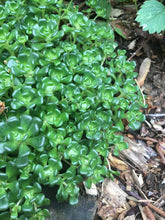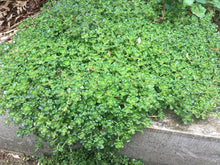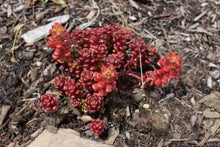
Sedum oreganum
Oregon stonecrop is an evergreen groundcover with attractive, year-round appeal. It's especially striking in summer when clusters of bright yellow flowers burst into bloom atop short, upright stems, beckoning neighborhood bees and butterflies. Depending on growing conditions like sunlight, heat and soil, its compact, succulent leaves can vary in color from green to red.
- Plant type/canopy layer: evergreen, perennial, herbaceous plant
- Size at maturity: 3-6" tall, spreads laterally by rhizomes, creating a groundcover
- Light requirements: full sun, part sun/part shade
- Moisture requirements: moist to dry soil
- Bloom time: June - August (July - August in the Portland Metro area)
- Growth rate/ease: medium growth rate, easy to grow
- Wildlife support: flowers are a nectar source for adult butterflies, bees and other insect pollinators; overall plant is a caterpillar host plant and larval food source for native butterflies and bees and attracts and supports predatory and other beneficial insects
- Native habitat/range: commonly grows on rocky outcrops and ledges, gravelly places, and slopes, from sea level to 1500m, across the Pacific Northwest from the coast to the Cascades. Portland Plant List - yes.
- Special features & uses: evergreen; groundcover; landscape uses include pollinator gardens, green roofs, rock gardens, rock walls and potted arrangements
Gardening with Oregon Stonecrop: This is an excellent choice for partial to full sun rock and pollinator gardens with moist to dry, well-drained soil. It is relatively easy to grow, spreading laterally to colonize areas over time. If you hope to achieve this consistent groundcover effect, a good strategy is to buy enough so you can space them every foot or so.
Photo Credit 1 (flowers): "Sedum oreganum 1" is licensed under CC BY-SA 3.0.
Photo Credit 2 (super close): © Yves Bas, some rights reserved (CC-BY)
Photo Credit 3 & 4 (foliage): Tracy Cozine, Sparrowhawk Native Plants
Photo Credit 5 (red foliage): Nikkie West, Sparrowhawk Native Plants
Photo Credit 6 (in the wild): © Timothy McNitt, some rights reserved (CC-BY)






